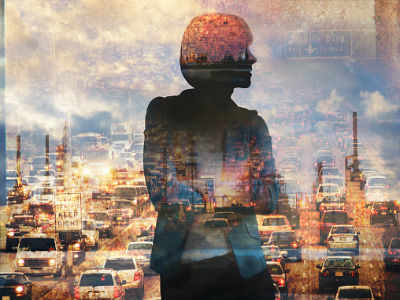- News
- lifestyle
- health-fitness
- health-news
- 10 of world's 20 most polluted cities in India : List inside
Trending
This story is from May 13, 2016
10 of world's 20 most polluted cities in India : List inside
All the cities on WHO list are from north and central India

10 of world's 20 most polluted cities in India (Getty Images)
Delhi had emerged as the most polluted city in WHO's 2014 database, with a mean annual PM2.5 level of 153 mgm3.That number has come down to 122 in the latest report.

In the latest database, Zabol in Iran is the most polluted city in the world. Gwalior and Allahabad are a close second and third in terms of PM2.5 concentrations, which is associated with more serious health impacts than PM10. Patna and Raipur rank sixth and seventh, respectively. In all, four Indian cities are among the world's 10 most polluted cities while 10 out of the worst 20 cities are in India.
For Delhi, WHO took data from 10 stations for its 2016 report, including some in the less polluted residential areas. In 2014, just five station were taken into account. This time, data was taken not just from government agencies but also from open government data and US air quality mission.
In a clarification to TOI, a WHO official said, “In 2014, we had data for 2013 only. This time, we had both 2013 and 2014. From one database version to the other, we may have more stations, different stations for a given city ,“ the official said.
Another reason for improvement in the Delhi ranking was the inclusion of 1,400 more cities in the list. In 2014, WHO had ranked 1,600 cities but this time it has considered 3,000 cities in 103 countries, which just brings more polluted cities under focus. In WHO's 2014 report, 13 out of 20 most polluted cities were in India.
This time two Chinese cities -Baoding and Xingtai have figured in the top 10, so have two Saudi Arabian cities -Riyadh and Al Jubail. In 2014, Riyadh, Al Jubail and Xingtai were not monitored.
Delhi's annual mean PM2.5 levels are three times the annual national standard and 12 times the WHO standard of 10 micrograms per cubic metres, highlighting how the city's air quality continues to be very poor.
Delhi also remains the most polluted among mega cities (more than 14 million population) followed by Cairo and Dhaka. Experts also advised against comparing cities Indian cities with each other simply because many cities are not adequately monitored. For instance, in Gwalior, Allahabad and Raipur, the PM 2.5 figures have been extrapolated from PM10 data, which could have a higher error margin.
Meanwhile, Delhi government issued a press statement claiming that “the decline in air pollution levels in Delhi is a collective effort and the government is committed to continue the war against air pollution with active cooperation of the residents.“
The statement said, “According to information provided by Delhi Pollution Control Committee scientists, important factors behind the reduction in air pollution measurements for Delhi during the last one year are increased awareness about pollutants, availability of the pollution-related data in the public domain, concrete action to control emissions from construction activities and control on industrial emissions.“
Since WHO has considered 201314 data, it's clear that the improvement in Delhi's ranking were not a result of AAP government's strategies. However, DPCC scientists told TOI they are seeing a slowing down or arrest in PM2.5 levels. According to them, the city's average was 130 mgm3 in 2011, 168 in 2012, 143 in 2013, 151in 2014 and 118 in 2015.
WHO's report may also be giving a slightly skewed picture because its database is only based on PM 2.5 levels. Many European cities have higher NOx and ozone (O3) levels but that isn't getting reflected because those parameters are not being monitored at all. In fact, if you consider cities that are breaching the WHO standard, France alone has 247 such cities, Italy has 216 while India has 121.This could be highly dependent on better monitoring coverage.
“Advanced countries that have shown progress in reducing air pollution are also facing newer challenges. Mix of pollutants and nature of health risks are changing, setting new goals for mitigation. For instance, over the last two years, several European cities have reported violation of nitrogen oxide standards.

End of Article
FOLLOW US ON SOCIAL MEDIA









